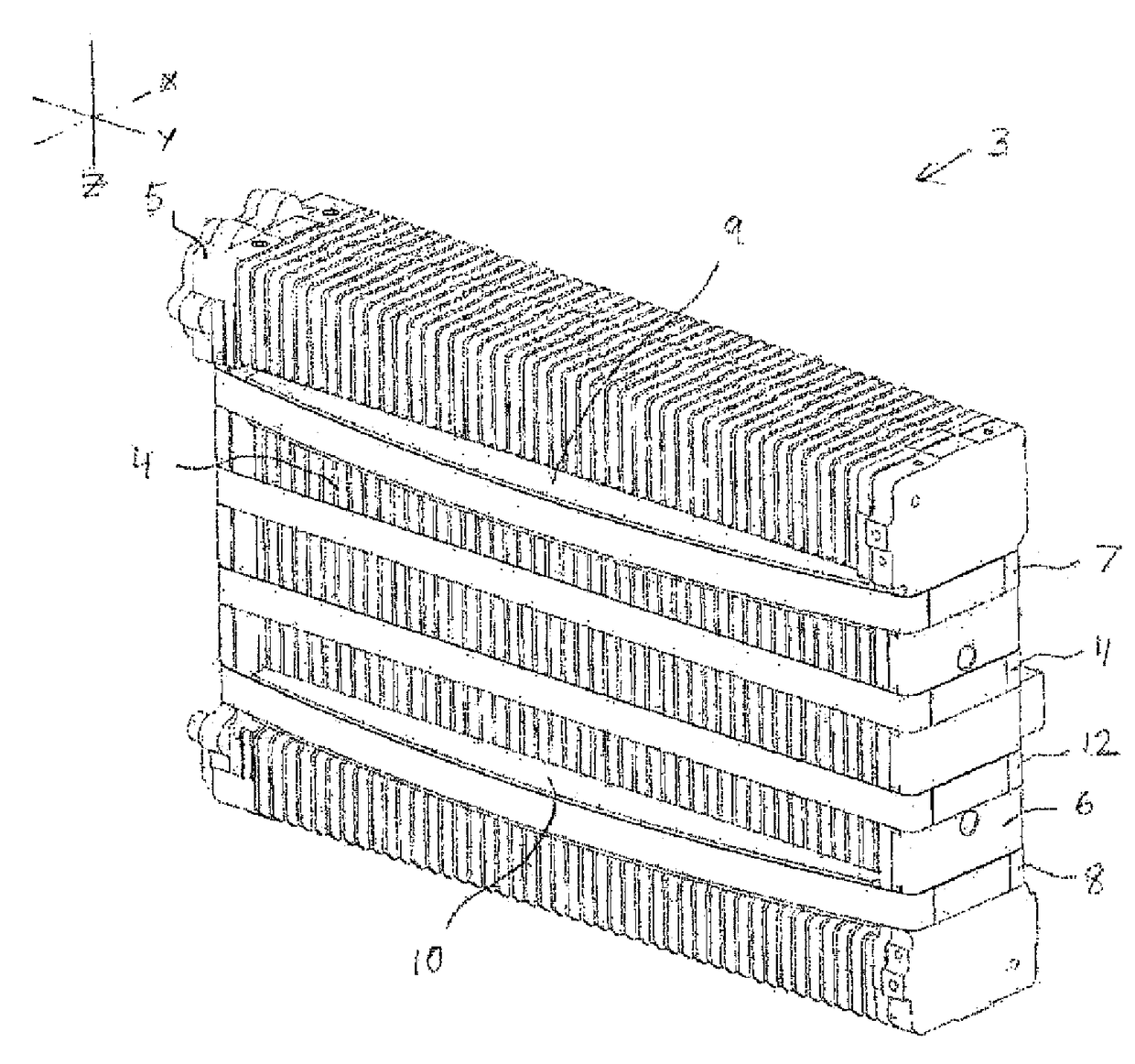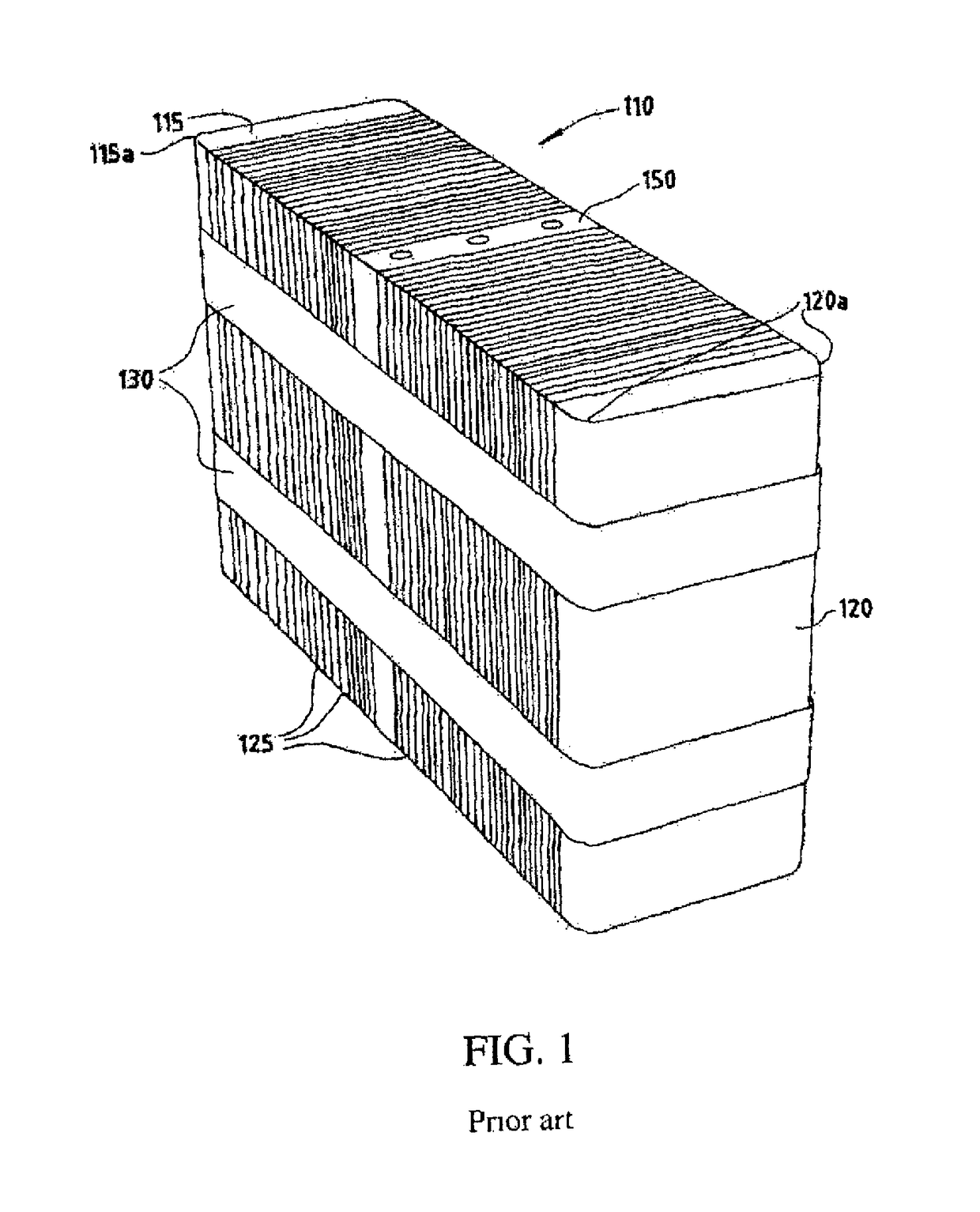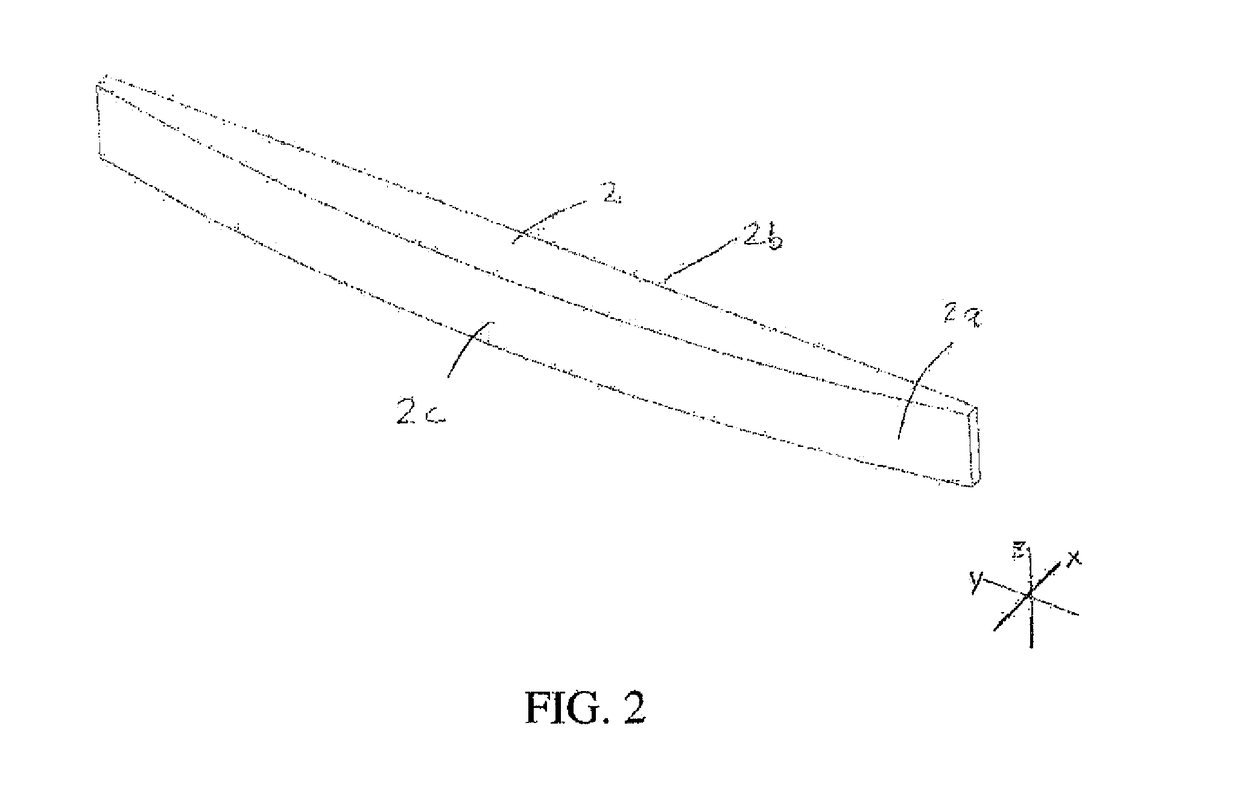Fuel cell stacks with increased natural frequency
a fuel cell and natural frequency technology, applied in the field of increasing the natural frequency of fuel cell stacks, can solve the problems of stack resonance and damage, large number of thin, fragile components, etc., and achieve the effect of preventing resonance damag
- Summary
- Abstract
- Description
- Claims
- Application Information
AI Technical Summary
Benefits of technology
Problems solved by technology
Method used
Image
Examples
examples
Calculated Examples
[0034]The natural frequency of an exemplary automotive fuel cell stack was calculated as a function of stack length (or alternatively the number of cells in the stack). The cells were assumed to be essentially rectangular solid polymer electrolyte fuel cells with long and short dimensions of about 40 cm and 10 cm respectively. The length of the series of cells in the stack was considered to vary from about 45 to 65 cm. The overall stack length is about 4 cm greater than the height of the series stack of cells, so the stack length was considered to vary from about 49 to 69 cm. The stack was similar to that shown in FIG. 3 but employed only two endless compression straps and was absent any support bars.
[0035]The fuel cell stack was assumed to behave as a simply supported uniform beam characterized by the following parameters: modulus of rigidity of 27 MPa, a moment of inertia of 6260 cm4, a mass / length of 0.977 kg / cm, and a length L in the stacking direction. Using ...
PUM
| Property | Measurement | Unit |
|---|---|---|
| length | aaaaa | aaaaa |
| height | aaaaa | aaaaa |
| height | aaaaa | aaaaa |
Abstract
Description
Claims
Application Information
 Login to View More
Login to View More - R&D
- Intellectual Property
- Life Sciences
- Materials
- Tech Scout
- Unparalleled Data Quality
- Higher Quality Content
- 60% Fewer Hallucinations
Browse by: Latest US Patents, China's latest patents, Technical Efficacy Thesaurus, Application Domain, Technology Topic, Popular Technical Reports.
© 2025 PatSnap. All rights reserved.Legal|Privacy policy|Modern Slavery Act Transparency Statement|Sitemap|About US| Contact US: help@patsnap.com



